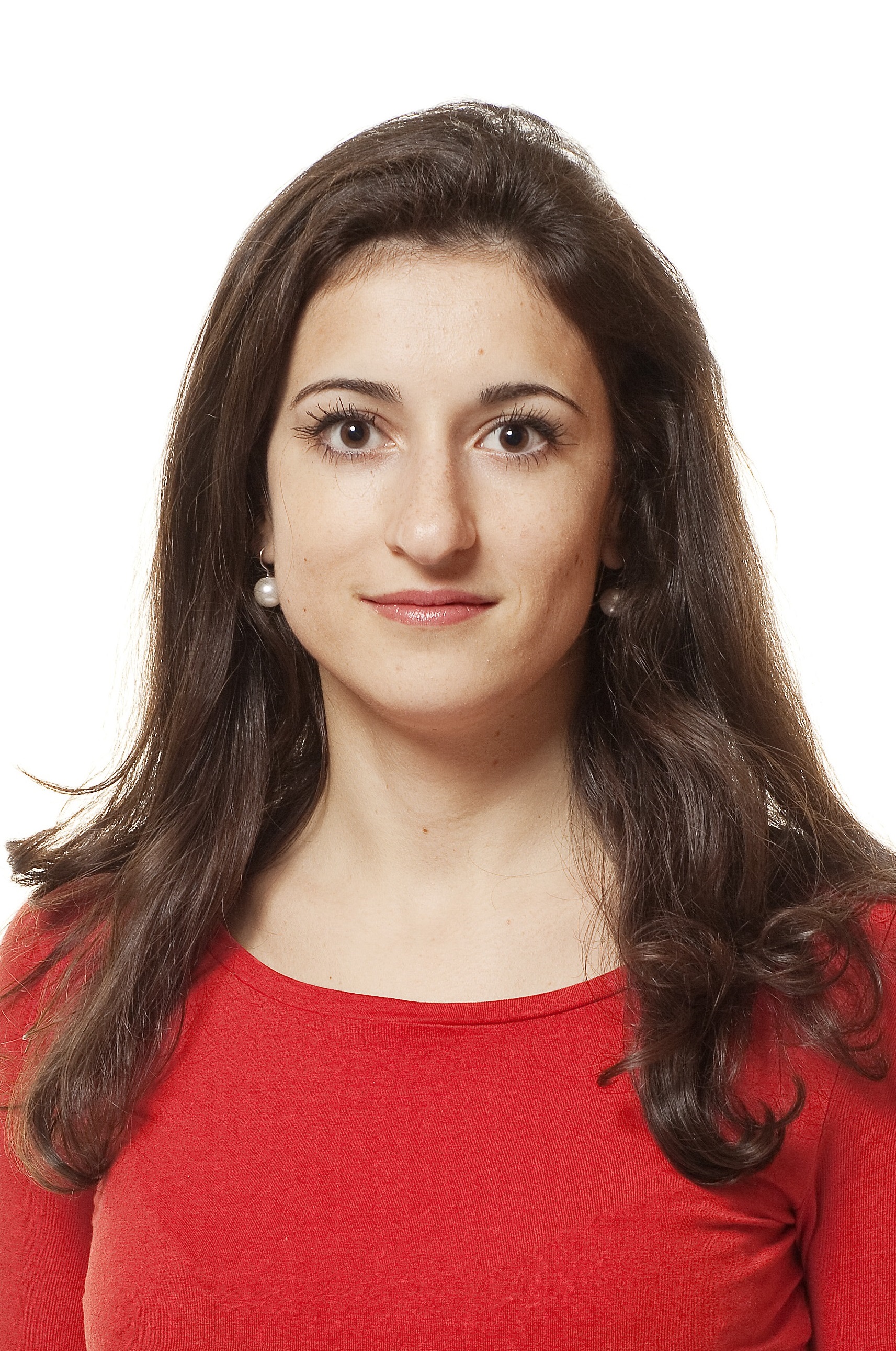Department of Finance
Placements
You can find the most recent placements of our job market and PhD candidates here. The list shows the first placement of the student after finishing the program and includes graduates from the year 2015 and onwards.
Placements overseas |
Placements Europe |
|
|
Job Market Placements 2022/2023
Andreas Brøgger joins Rotterdam School of Management
Theis Ingerslev Jensen joins Yale School of Management
Job Market Placements 2021/2022
Jakob Ahm Sørensen joins Bocconi University
Nicola Giommetti
Job Market Placements 2020/2021
Benjamin Knox joins Federal Reserve Board of Washington DC
Job Market Placements 2019/2020
Thomas Kjær Poulsen joins BI Norwegian Business School
Job Market Placements 2018/2019
Stine Louise Daetz joins Danmarks Nationalbank
Niels Joachim Gormsen joins Chicago University (Booth)
Christian Skov Jensen joins Bocconi University Milan
Andreas Bang Nielsen joins Cornerstone Research (US)
Job Market Placements 2017/2018
Sven Klingler joined BI Oslo
Davide Tomio joined University of Virginia (Darden)
Job Market Placements 2016/2017
Kay Sun Park joined Incheon Development Institute in South Korea
Aleksandra Rzeźnik joined WU Vienna University of Economics and Business
Desi Volker joined the Federal Reserve Bank of New York
Job Market Placements 2015/2016
Mamdouh Medhat joined Cass Business School, London
Full list of Job Market Candidates
| 2022/2023 | |
|---|---|
|
|
Andreas Brøgger
Areas of Interest: Sustainable Investing, ESG, Macro Finance, Asset Pricing, Corporate Finance
Job Market Paper: Skills and Sentiment in Sustainable Investing
We document a significant difference in the returns to sustainable investing across investor types. Investors with strict ESG mandates earn 3.1% less than flexible investors. The mechanism is that flexible investors are able to react on expected ESG improvements. They buy stocks that subsequently experience ESG score increases. After ESG improvements have realized, demand from strict mandate investors pushes up stock prices, resulting in positive returns for flexible investors. These returns are higher when accompanied by rising climate sentiment, as seen during the 2010s. Our channel accounts for 51% of the return difference between strict and flexible ESG investment mandates.
Placement: Rotterdam School of Management |
|
|
Theis Ingerslev Jensen Areas of Interest: Empirical asset pricing, subjective expectations, machine learning
Job Market Paper: Subjective Risk and Return
I use subjective risk and return expectations to infer required returns, yielding three new findings for stocks, equity factors, and asset pricing models: (i) For individual stocks, the required compensation for risk is strongly positive. Nevertheless, the realized compensation for risk is weak due to offsetting excessive cash flow expectations for risky stocks. (ii) Required returns cannot explain the realized return of most equity factors. (iii) Recent empirical asset pricing models explain realized returns well but required returns poorly - while the reverse is true for traditional models like the CAPM.
Placement: Yale School of Management |
| 2021/2022 | |
|---|---|
|
|
Jakob Ahm Sørensen
Areas of Interest: Empirical asset pricing, macro-finance and corporate finance.
Job Market Paper: Risk Neglect in the Corporate Bond market
I present an equilibrium model for valuing corporate bonds and stocks to distinguish investors’ rational risk aversion from diagnostic expectations. Motivated by the model, I construct a novel empirical measure of credit market sentiment, denoted yield-for-risk, which measures the compensation investors require for credit risk in the cross-section of corporate bonds. I find evidence of diagnostic expectations in the form of risk neglect: Low yield-for-risk predicts low returns to credit and an inversion of the risk-return relationship among both corporate bonds and stocks. Firms exploit this effect by increasing their debt issuance when yield-for-risk is low, especially high-risk firms.
Placement: Bocconi University |
|
|
Nicola Giommetti
Areas of Interest: asset pricing, valuation, and portfolio allocation with illiquid assets.
Job Market Paper: "Risk Adjustment of Private Equity Cash Flows"
Existing stochastic discount factor methods for the valuation of private equity funds result in unrealistic time discounting. We propose and evaluate a modified method. Valuation has a risk-neutral component plus a risk adjustment, and we fix the risk-neutral component by constraining the subjective term structure of interest rates with market data. We show that (i) our approach allows for economically meaningful measurement and comparison of risk across models, (ii) existing methods estimate implausible performance when time discounting is particularly degenerate, and (iii) our approach results in lower variation of performance across funds.
Placement: |
| 2020/2021 | |
|---|---|
|
|
Benjamin Knox
Areas of Interest: Asset Pricing, Insurance, Financial Intermediaries, FinTech, Monetary Policy
Job Market Paper: "Asset-Driven Insurance Pricing"
We develop a theory that connects insurance premiums, insurance companies’ investment behavior, and equilibrium asset prices. Consistent with the model's key predictions, we show empirically that (1) insurers with more stable insurance funding take more investment risk and, therefore, earn higher average investment returns; (2) insurance premiums are lower when expected investment returns are higher, both in the cross section of insurance companies and in the time series, and both for life insurance companies and the property and casualty industry. Consistent with a causal interpretation of these results, we find insurance premiums move similarly when investment returns change exogenously due to mergers.
Placement: Federal Reserve Board in Washington |
| 2019/2020 | |
|---|---|
|
|
Thomas Kjær Poulsen
Areas of Interest: Asset pricing, Corporate Finance, Financial Economics
Job Market Paper: "Does Debt Explain the Investment Premium?"
The investment premium - the finding that firms with low asset growth deliver high average returns - is an integral part of recent factor models. I document empirically that the investment premium (1) reflects leverage, (2) does not exist among zero-leverage firms, and (3) increases with firms' refinancing intensities. This new evidence challenges prominent explanations of the investment premium including the q-theory of investment and behavioral finance. To explain the evidence, I develop a model in which firms make both optimal investment and financing decisions. The model shows that the investment premium reflects both leverage and refinancing intensities consistent with my empirical findings.
Placement: BI Norwegian Business School |
| 2018/2019 | |
|---|---|
|
|
Stine Louise Daetz
|
|
|
Niels Joachim Gormsen
Secondary Job Market Paper (with Christian Skov Jensen): “Conditional Risk”
We present a new direct methodology to study conditional risk, that is, the extra return compensation for time-variation in risk. We show theoretically that the conditional part of the CAPM can be captured by augmenting the standard market model with a conditional-risk factor, which is a specific market timing strategy. Both in the U.S. and global sample covering 23 countries, all major equity risk factors load on our conditional-risk factor, implying that each factor has a higher conditional market beta when the market risk premium is high or the market variance is low. Accordingly, these factor returns can be partly explained by conditional risk. Studying the economic drivers of these results, we find evidence that conditional risk arises from variation in discount rate betas (not cash flow betas) due to the endogenous effects of arbitrage trading. |
|
|
Christian Skov Jensen
We show how the market's higher order moments can be estimated ex ante using methods based on Martin (2017). These ex ante higher order moments predict future realized higher order moments, whereas trailing realized moments have little predictive power. Higher-moment risks move together in the sense that skewness becomes more negative when kurtosis becomes more positive. In addition, higher-moment risk is high when volatility is low, suggesting that risk doesn't go away - it hides in the tails. Higher-moment risk has significant implications for investors; for example, the tail loss probability of a volatility-targeting investor varies from 3.6% to 9.7%, entirely driven by changes in higher-moment risk. We empirically analyze the economic drivers of these risks, such as financial intermediary leverage, market and funding illiquidity, and potential bubbles. |
|
|
Andreas Bang Nielsen Areas of Interest: Credit Risk, Foreign Exchange, Derivatives, Empirical Asset Pricing Job Market Paper: "Forward-Looking Currency Betas"
|
|
2017/2018 |
|
|---|---|
|
|
Sven Klingler
Areas of Interest: Asset Pricing, Financial Frictions, Hedge Funds, Limits of Arbitrage
Job Market Paper: High Funding Risk, Low Return
I develop a simple model where hedge fund managers with a higher exposure to a common funding shock deliver lower subsequent returns. Empirically, I find that hedge funds with a higher loading on a simple funding risk measure generate lower returns than hedge funds with a lower loading on that measure. In line with the model predictions, I find that (i) this underperformance is driven by a high loading on adverse funding shocks, (ii) a higher loading on funding risk predicts lower fund flows, and (iii) the results are significantly weaker for funds that have a lockup provision.
Placement: Assistant professor at BI Oslo
|
|
|
Davide Tomio
Areas of Interest: Market Microstructure, Asset Pricing, Empirical Finance
Job Market Paper: Arbitraging Liquidity
This paper shows theoretically and empirically how arbitrage activity contributes to the convergence of liquidity across markets. Based on simple arbitrage arguments, I show theoretically how arbitrageurs’ market and limit orders create a co-movement across markets of bid prices, ask prices, and bid-ask spreads. Empirically, I document how the intensity of arbitrage activity is related to the co-movement of market liquidity between securities linked by arbitrage. I focus on Canadian stocks cross-listed in the United States and also consider commonality across stocks and corporate bonds linked by capital structure arbitrage.
|
| 2016/2017 | |
|---|---|
|
|
Kay Sun Park
Areas of Interest: Empirical and Theoretical Corporate Finance, International Finance
Job Market Paper: Capital Structure Redux: Maturity, Leverage, and Flexibility We investigate how a firm jointly determines the amount of debt and its maturity in a dynamic capital structure. We find a firm with high volatility of earnings optimally issues debts of shorter maturity which helps it maintain its financial flexibility. Using simultaneous equations of leverage and maturity regression, we find that higher leverage is led by shorter maturity. Our results support the dynamic capital structure model in which a firm decides its leverage as a trade-off between bankruptcy costs and tax benefits, as well as optimally adjusting the maturity of its debt by taking account of their financial flexibility versus the costs of new debt issuance. These findings can explain why financial institutions with high volatility of earnings before the 2007-2009 financial crisis had higher leverage as well as huge short-term financing.
Placement: Research Fellow at Incheon Development Institute in South Korea
|
|
|
Aleksandra Rzeźnik
Areas of Interest: Empirical Asset Pricing, Liquidity, Institutional Investors, Real Estate
Job Market Paper: Mutual fund flight-to-liquidity
This paper examines the liquidity choices of mutual funds during times of market uncertainty. I find that when markets are uncertain, mutual funds actively increase the liquidity of their portfolio - often referred to as a ‘flight-to-liquidity.’ In aggregate, mutual fund behaviour has implications for the market; the market driven flight-to-liquidity places upward pressure on the liquidity premium. I examine the underlying mechanisms driving fund behaviour. I show that market volatility is associated with lower fund performance and withdrawals, which causes funds to adjust the composition of their portfolio towards more liquid assets in order to meet potential redemptions. This causal chain is consistent with Vayanos (2004), who argues that fund managers are investors with time-varying liquidity preferences due to threat of withdrawal. Aggregated over funds, the effect is substantial: a one standard deviation increase in my measure of flight-to-liquidity yields a 0.63 standard deviation increase in the excess return required for holding illiquid securities.
Placement: Assistant professor at WU Vienna University of Economics and Business in Austria
|
|
|
Desi Volker
Areas of Interest: Financial economics, Macro-finance, Empirical asset pricing, Monetary economics, Fixed income
Job Market Paper: Monetary Policy Uncertainty and Interest Rates
This paper studies the effect of the uncertainty surrounding the future path of monetary policy on interest rates. I proxy uncertainty with the cross-sectional dispersion in one year ahead fed funds rate forecasts from survey data. Within a flexible dynamic term structure model with observable and latent factors, I provide evidence in support of a link between uncertainty and interest rate dynamics. In particular I show that: (i) uncertainty is an important contributor to the variation in conditional yield volatilities and has a slope effect on the volatility term structure; (ii) monetary policy uncertainty risk is priced and affects expected excess returns at short horizons; and (iii) it can be interpreted as a pure volatility risk factor as it is weakly spanned by the cross-section of yields
Placement: Federal Reserve Bank of New York in the United States
|
| 2015/2016 | |
|---|---|
|
|
Mamdouh Medhat Areas of Interest: Asset pricing, Asset pricing implications of corporate finance theory, Credit risk Job Market Paper: Liquidity Risk and Distressed Equity I show theoretically and empirically that solvency and liquidity can help rationalize low distressed equity returns. In my model, levered firms facing financing constraints optimally choose liquidity reserves and optimally default when insolvent. I find empirical evidence consistent with the model's predictions: (1) In all solvency levels, the average firm holds enough liquid assets to cover its short-term liabilities; less solvent firms have (2) a higher fraction of their total assets in liquid assets and therefore (3) lower conditional betas and (4) lower returns; (5) the profits of strategies are concentrated among low liquidity firms; and (6) the profits of liquidity strategies are concentrated among low solvency firms. My results suggest that solvency and liquidity are essential to understanding the distress puzzle.
Placement: Assistant professor Cass Business School London |
Other PhD Placements
| 2021/2022 | |
|---|---|
|
|
Kirsten Tangaa Nielsen
|
|
|
Søren Bundgaard Brøgger PhD dissertation: Essays on Modern Derivatives Markets I investigate the feedback effects that can arise when hedging flows from derivatives markets are large relative to the underlying market. I find that flows are efficiently absorbed when the underlying market is liquid (first chapter), but can distort the dynamics of the underlying asset(s) if not (second chapter). In the final chapter (with Jesper Andreasen), we show what happens to the value of cash if the zero lower bound on nominal rates is removed. Placement: Saxo Bank |
 |
Alexander Kronies PhD dissertation: Opportunities and Risks in Alternative Investments This thesis concerns alternative investments in equity and energy markets. The first chapter (with Andreas Brøgger) documents that only some investors with skill earn high returns when investing sustainably. In the second chapter, I provide evidence that large wind turbines outperform their smaller peers as they yield higher cash flows per production unit. Finally, chapter three shows that the allocation of private capital to renewable energy projects is largely driven by subsidy structures and very specific risk exposures. Placement: TBA |
| 2020/2021 | |
|---|---|
|
|
Julie Marx
PhD dissertation: Households in the housing market
Housing typically is the largest household asset and decisions in the housing market significantly impacts wealth, welfare, and opportunities of households. This PhD thesis uses Danish register data to study household decision-making, in particular in the housing market. The thesis covers the full circle of homeownership: buying, selling, and relocation, as well as the topics of negotiation, reference dependence, household heterogeneity, and education.
Placement: Copenhagen Business School |
| 2019/2020 | |
|---|---|
|
|
Benjamin Christoffersen
PhD dissertation:
Modelling the joint distribution of defaults is a key part of bottom-up models for the loss of a corporate debt portfolio. Two of the chapters in the thesis concerns default models to account for time-varying unobservable effects and how to estimate these models. The other two chapters are applications of such models.
Placement: KTH Royal Institute of Technology |
|
|
Frederik Ørnsholt Regli
Placement: Ørsted |
| 2018/2019 | |
|---|---|
|
|
Pia Mølgaard
PhD dissertation:
The thesis consists of three self-contained essays. The first essay investigates the trading pattern of managers of collateralized loan obligations (CLO) and how it affects the performance of the CLO. The second essay investigates how post issuance ratings and prices of corporate loans depends on the relationship the firm has with its bank connection. The third essay investigates how microstructural noise components in asset prices affect test results of the lead-lag relationship between corporate bond and CDS spreads.
Placement: Danmarks Nationalbank |
| 2017/2018 | |
|---|---|
|
|
Niklas Kohl
PhD dissertation:
Firms which issue new equity subsequently have lower returns than other firms. The essays explore whether the strength of this effect depends on differences in issuer characteristics, and between issuers in different markets. Moreover, I investigate whether issuer underperformance can be explained by information asymmetry.
Placement: Company-owner of Selandia Capital |
|
|
Nina Lange
PhD dissertation: |
| 2016/2017 | |
|---|---|
|
|
Søren Korsgaard
PhD dissertation:
The thesis consists of three chapters. The first chapter examines the market for retail payments, specifically the role of interchange fees in payment card networks. The second chapter looks at how banks' liquidity shape outcomes in the money market. Finally, the third chapter explores how central banks use collateral policy to support lending
Placement: Danmarks Nationalbank |
|
|
Mads Vestergaard Jensen
PhD dissertation:
The first chapter (with Lasse Heje Pedersen) shows that the classic rule that one should never exercise a call option early breaks down when frictions are severe enough. The second chapter documents that underlying stocks underperform after early exercise, consistent with private information leading to early exercise. The final chapter (with Christian Skov Jensen) finds that, consistent with an increase in differences of opinion, a positive demand shift for shorting a stock predicts higher volatility for the affected stock.
Placement: Danica Pension |
|
|
Mikael Reimer Jensen
PhD dissertation:
The thesis consists of three chapters. The first chapter examines how banks’ liquidity position shapes outcomes in the money market. The second chapter investigates the decomposition of interbank rates into credit and liquidity risk. Finally, the third chapter explores how the classical no-arbitrage pricing framework can be extended by assuming that the underlying asset can be used in a repo transaction.
Placement: ATP |
| 2014/2015 | |
|---|---|
|
|
Sebastian Fux
PhD dissertation: Essays on Return Predictability and Term Structure Modelling
The thesis is available here
Placement: PWC, Zürich |



























